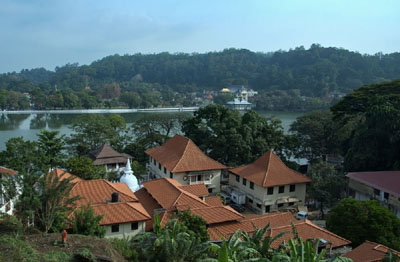WHAT ARE THE MAIN CONTRIBUTING SECTORS OF SRI LANKA’S ECONOMY?
 According to the World Bank, Sri Lanka is a developing country with an increasing annual economic rate as a result showing great potential for future economic growth. While the country as a whole has historically been slow to adapt to changes, it has experienced significant changes in its economic structure within the past 10 years, especially since the end of its civil war back in 2009. The country has traditionally relied on the plantation industry as a major source of economic output, however, nowadays other sectors have overtaken this top spot.
According to the World Bank, Sri Lanka is a developing country with an increasing annual economic rate as a result showing great potential for future economic growth. While the country as a whole has historically been slow to adapt to changes, it has experienced significant changes in its economic structure within the past 10 years, especially since the end of its civil war back in 2009. The country has traditionally relied on the plantation industry as a major source of economic output, however, nowadays other sectors have overtaken this top spot.
The Services Sector
Contributing to more than 60 percent of Sri Lanka’s GDP as of 2016, the services sector is by far the largest generating source of the country’s production. According to the Central Bank of Sri Lanka, the wholesale and retail trade took the largest slice of the services sector, with more than 20 percent of all Services sector’s contributions coming through this trade.
Nevertheless, coming at second place was the Transport and Communication segment, which combined contributed to more than 14 percent of the outcome of the Services industry.
At third place was the country’s fast growing tourism industry, which accounted for roughly around 10 percent of the service industry’s total outcome.
Finally, the banking sector, insurance as well as real estate were at a respectable fourth place and contributed roughly 9 percent to the service industry’s output.
The Industrial Sector
Contributing to more than 30 percent of Sri Lanka’s entire economic output was the industrial sector, which has seen some surprising growth for the past five years.
As stated by the Central Bank of Sri Lanka, the largest proportion of the industrial sector was comprised of manufacturing businesses, which accounted for more than 17 percent of the segment’s entire output.
Apart from that, the construction industry also had a notable footprint in the industrial sector, with roughly 10 percent of the segment’s revenue funneling through the growth of the construction industry. The plethora of possibilities born in the construction sector post war, have led to some of the most significant developments over the past few years.
Other segments of the industrial sector such as mining or electricity had only a minor impact contributing roughly 3 percent and 2.5 percent, respectively.
The Agricultural Sector
Agriculture has always been one of the main Sri Lanka’s economy’s contributors due to being the main livelihood of the majority of the population (2.6 million of the labour force of the country). However, the agricultural sector was the least contributing subdivision of the Sri Lankan economy, with less than 8.5 percent contribution as of 2017. This sector was also the only major segment that saw a gradual decline of its total share of contribution (showing a -2.5% contraction) for the past 10 years.
The Fisheries industry was the largest contributor to this segment with more than 1.4 percent of its total output. The tea exports were at second place at one percent, while rice cultivation was at third with a 0.8 percent contribution.
The Future
Even though agriculture used to be the dominant contributor to Sri Lanka’s economy, by now it is evident that the country’s output is more driven by the service sector. This sector should be further advanced due to increasing internet penetration (32%) as well as the on-going investments towards infrastructure such as the Colombo Port City and Western Region Megapolis. The latter also means that there will be more output through the industrial sector itself. Additionally, Sri Lanka, particularly Colombo, is offering highly skilled and educated specialists (especially in IT sector); often at a comparatively better rate than other surrounding countries. This leads to MNCs to look to expand their operations to the country and their FDI flows should further support country’s economic growth and strengthen the services sector. Such foreign company development would also mean growing demand for office (which is already high) and residential spaces, which in turn would lead to the growth of the industrial sector.





